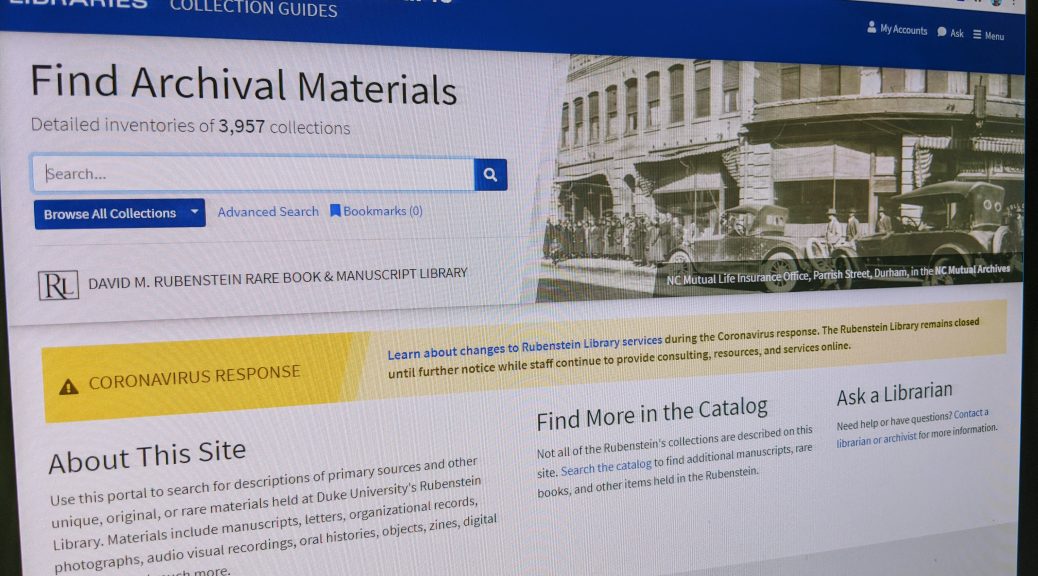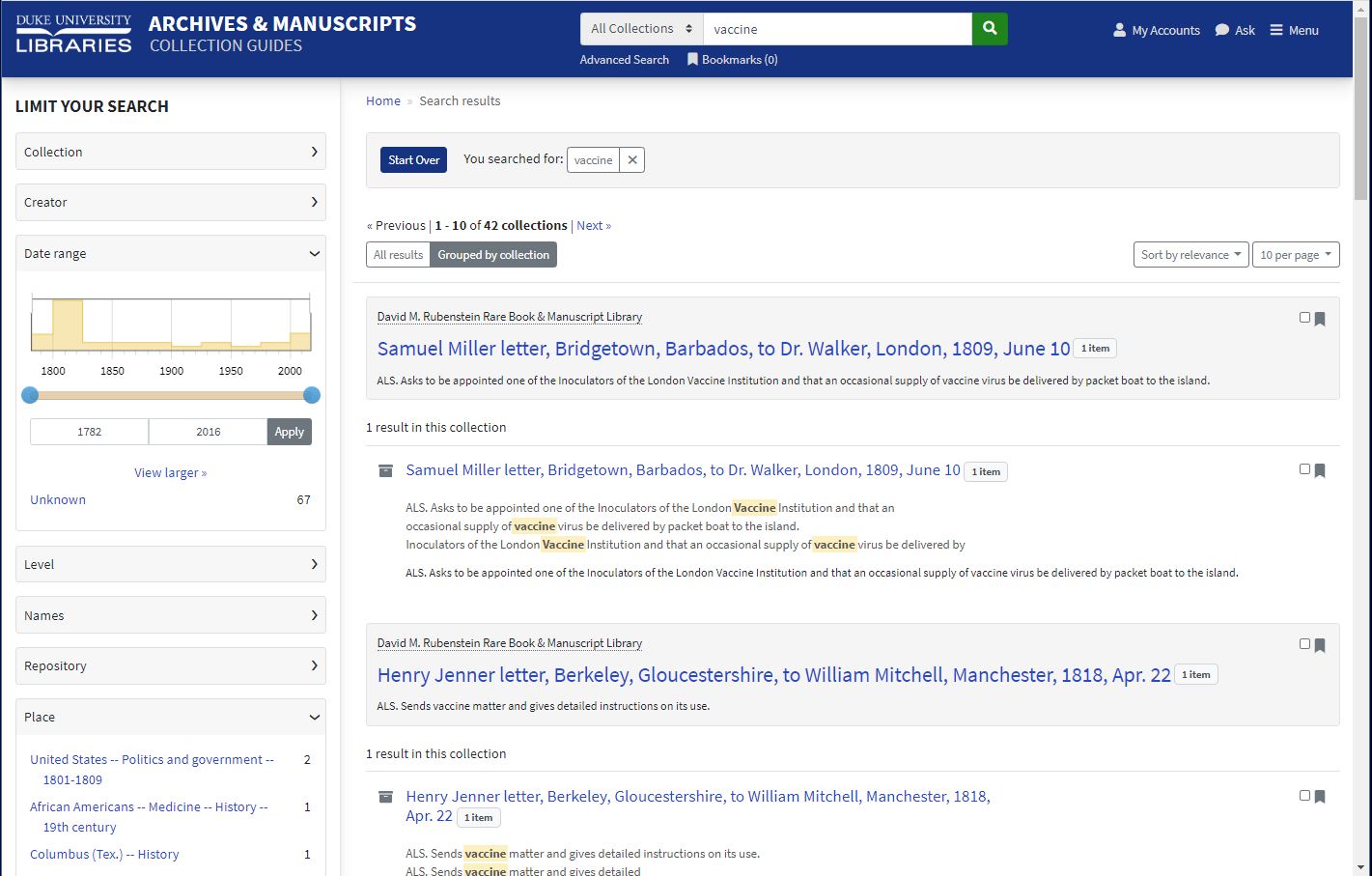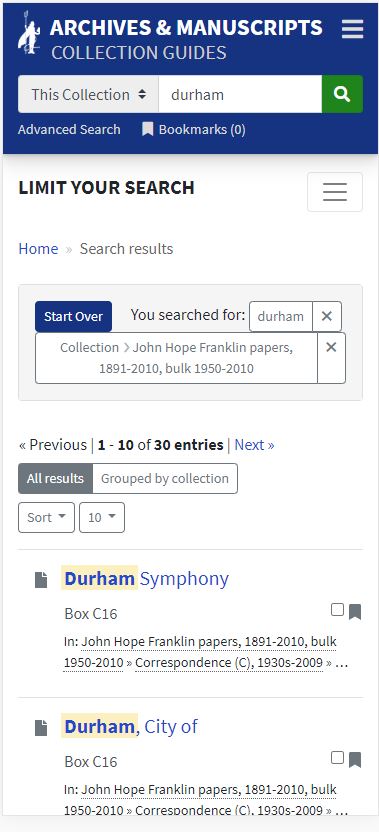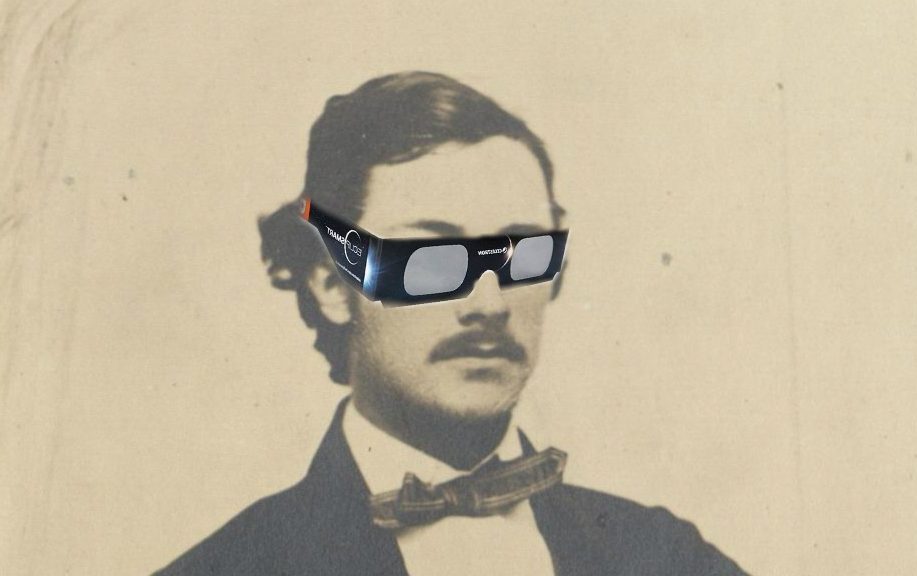Post contributed by Noah Huffman, Archivist for Metadata, Systems, and Digital Records
On July 1, 2020 the Rubenstein Library will launch a new and completely redesigned discovery and access interface for our collection guides (a.k.a. finding aids). The new site, soon-to-be available at archives.lib.duke.edu, will replace our current finding aid platform and is the result of over a year of planning and six months of local development work. Duke staff can access a demo app (VPN required) for a sneak peak of the interface before it launches.
Here’s a 5-minute video tutorial outlining some the site’s key features.
Built on the open-source ArcLight software, the site will offer researchers new ways to search, browse, and explore nearly 4,000 detailed inventories of collections held in the Rubenstein Library, including the Duke University Archives. In total, the site will contain information about the contents of nearly 80,000 boxes of material held in the Rubenstein, including manuscripts, letters, diaries, organizational records, photographs, audio visual recordings, oral histories, objects, zines, digital materials, and much more.
What to expect from the new finding aid site:
While the new site will contain the same data available on the old finding aid site, you will notice many differences in the way information is structured and presented. Listed below are just some of the new features along with a few screenshots of the new interface. We’ll provide more details about the new interface after the July 1st launch. In the meantime, you can read about some of our design and development work in a blog post from Sean Aery, the primary developer for ArcLight at Duke.
Some new features in archives.lib.duke.edu:
- More comprehensive and reliable searching
- Advanced searching by name, place, subject, format, and title
- Filter search results by name, place, date, format, subject, and several other facets
- Limit search results to only materials available online
- Browse Duke-focused collections by University Archives Record Group (for university offices, schools, former presidents/provosts, athletics, student/campus life, etc.)
- Easily navigate large finding aids and complex collection hierarchies (by series, sub-series, etc.)
- View digital objects in the context of their collections: More seamless integration with the Duke Digital Repository
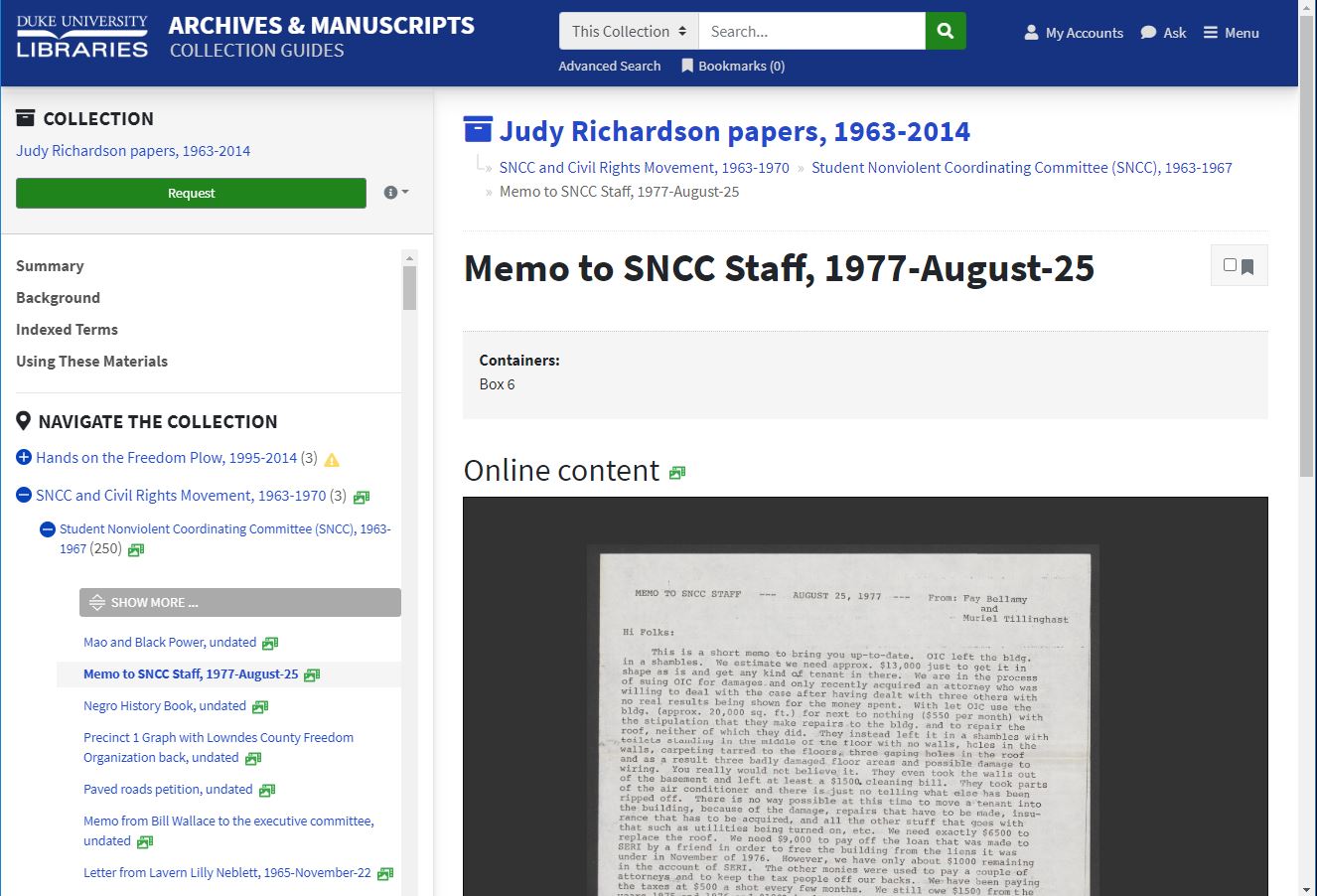
Navigate collection hierarchy and view digital objects in context - Bookmark collections, boxes, or folders of interest; save the bookmarks; and email them to yourself or others
- View a rotating gallery of featured items on the homepage (with citations and links to collections)
- Mobile-friendly display, but also optimized for wide displays
- Improved visibility of restriction information: Know when materials are restricted or require certain conditions for access
- WCAG2.0 AA compliant: works well with screen readers and other assistive technologies; easily navigable by keyboard
- Faster page-load times for large finding aids and for researchers with low-bandwidth connections
We welcome your feedback!
We’re proud of the new site and we hope it empowers researchers to discover and interact with our collections in new ways. Still, we know that there is more work to do and we welcome your feedback. If you have questions, find a bug, or want to suggest a new feature, please let us know!


